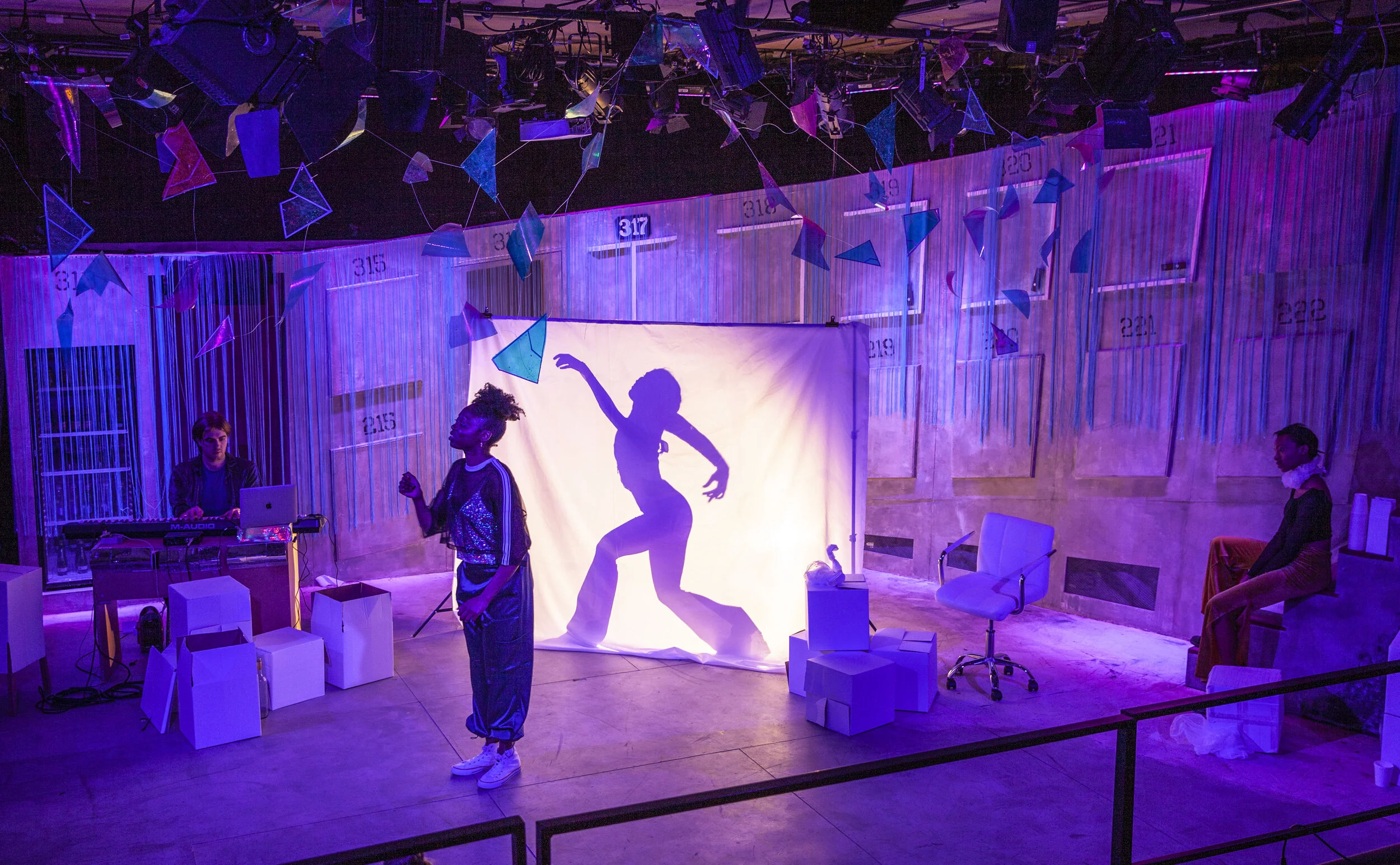Review: WYP presents The Girl on the Train
I arrived at West Yorkshire Playhouse both excited and inadvertently sceptical- this production of The Girl on the Train being the third incarnation of Paula Hawkins’ bestselling novel in as many years. In 2016, Tate Taylor directed an absorbing but inaccurate film adaptation, which moved the story to the suburbs of New York. Happily, writers Rachel Wagstaff and Duncan Abel return the setting to Watford for the stage version, refreshingly diffusing any sense of glamour and bringing a gritty domesticity to the drama.
This atmosphere is reinforced by the set itself. Lily Arnold’s design is strikingly sparse, muted and multifunctional. Clever lighting gives the impression that the audience watches through a carriage window, and this voyeurism has an uncanny two-dimensional effect.
The focal point throughout the show is a painting by the missing Megan Hipwell. It hangs centre stage, an enigmatic black hole enclosed by a swirling rush of blue, vaguely reminiscent of Edvard Munch’s ‘Scream’. The eye-catching depth at the centre of this painting is evidently emblematic of Megan’s absence, but also brings to mind the gaping holes in both Rachel’s memory and her alibi.
Although I try not to measure an adaptations’ goodness by its proximity to the original text, there are a few discrepancies which deserve to be addressed. For the most part, the plot remains the same: the beautiful Megan goes missing, her husband Scott is suspected. There’s the kindly but unprofessional DI Gaskill, and an unfortunate love triangle between Anna, Tom and the ex-wife- our troubled but ultimately likeable protagonist, Rachel.
However, Rachel’s roommate, the pragmatic and perpetually exasperated Cathy, is nowhere to be seen, and without her judgemental concern Rachel’s alcoholism is noticeably minimised. Wagstaff and Abel wash Rachel’s drinking with a kind of black humour; in the novel, her addiction is steeped in shame and indignity, but on stage it is merely an inconvenient coping mechanism. Having said that, this change lends itself well to stage, as it is perhaps what makes Rachel so much more relatable. Jill Halfpenny brings a restless, apprehensive quality to Rachel’s character, which communicates her inability to let go of her failed marriage, her sterility, and crucially, the fleeting sense of purpose which investigating Megan’s absence provokes in her.
There are inevitably some unconvincing moments. DI Gaskill regularly dispenses with confidentiality and relays sensitive information about Megan’s case to Rachel, even though she is clearly a suspect. The portrayal of Anna, a gossipy, privileged new mum never without a glass of white, is a little tired. Yet there are performances which make this adaptation more engaging than it is flawed. Florence Hall’s tearful soliloquy stirs up genuine sadness, Theo Ogundipe is defensive and unreachable, as any jealous husband should be, and Halfpenny expertly portrays a woman on the edge.
When you consider this play in the context of its previous forms, you focus on what is absent, but stand alone it is enthralling in its own right, plot holes and all.
You can see The Girl on the Train at West Yorkshire Playhouse in Leeds, until 9th June.
The Girl on the Train is a West Yorkshire Playhouse production, in association with Simon Friend, Amblin Partners and Joshua Andrews.
Title image sourced here





